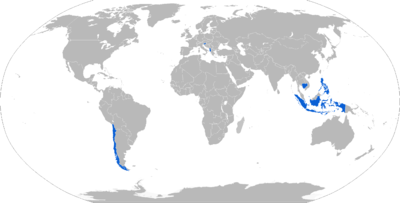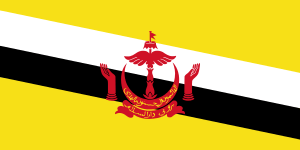Armbrust
| Armbrust | |
|---|---|
|
An Armbrust launcher (via Iraq OIG). | |
| Type | Anti-tank weapon |
| Place of origin | West Germany |
| Service history | |
| Used by | See Users |
| Wars |
Cambodian–Vietnamese War Croatian War of Independence Slovenian War of Independence Cambodian–Thai border stand-off 2013 Lahad Datu standoff |
| Production history | |
| Designer | Messerschmitt-Bölkow-Blohm (MBB) |
| Manufacturer |
Messerschmitt-Bölkow-Blohm (MBB) Pouderies Réunies de Belgique (PRB) ST Kinetics (STK) |
| Variants | Armbrust AT, Armbrust AP, Armbrust Ub, Armbrust SC |
| Specifications | |
| Weight | 6.3 kg (13 lb 14 oz) |
| Length | 850 mm (2 ft 9 in) |
| Width | 126 mm (5.0 in) |
| Height | 140 mm (5.5 in) |
|
| |
| Caliber | 67 mm (2.6 in) |
| Action | Recoilless weapon |
| Muzzle velocity | 210 m/s (690 ft/s) |
| Effective firing range | 300 m (980 ft) |
| Maximum firing range | 1,500 m (4,900 ft) |
| Feed system | Single shot |
| Sights | Reticle, externally illuminated for night |
Armbrust (German: Crossbow) is a lightweight unguided anti-tank weapon designed and developed by Messerschmitt-Bölkow-Blohm of Germany, who later sold its manufacturing rights to Chartered Industries of Singapore (the predecessor of ST Kinetics).
Overview
The Armbrust is a recoilless weapon, and is one of the few weapons of this kind that may safely be fired in an enclosed space. The propellant charge is placed between two pistons with the projectile in front of one and a mass of shredded plastic in the rear. Unlike most recoilless weapons, it is a true counter-shot weapon, as the mass of the projectile is equal to the mass of the counterweight and they are ejected from the barrel at the same initial velocity. When the weapon is fired, the propellant expands, pushing the two pistons out. The projectile is forced out of the front and the plastic out of the back. The plastic disperses on leaving the back of the barrel, and is quickly stopped by air resistance. The pistons jam at either end of the barrel, locking the hot gases inside. Its warhead can penetrate up to 300 mm of armoured steel.[1]
Since 2004, Armbrusts are gradually being replaced by the Israeli-German-Singapore co-developed MATADOR.
Combat use
During the Cambodian–Vietnamese War, Armbrust was supplied to the Cambodian Khmer Rouge. It was used in their fight against the Cambodian government, as well as against the invading Vietnamese Army.[2][3]
Slovenia and Croatia also smuggled in stocks of Armbrust for use by local troops against the Yugoslav People's Army in the Yugoslav Wars of the 1990s.
Operators


| Armbrust 1980s brochure photos | |
|
| |
|
| |
|
| |
|
|
Current operators
 Albania: Kosovo Liberation Army [4]
Albania: Kosovo Liberation Army [4] Brunei[5]
Brunei[5] Cambodia[5]
Cambodia[5] Chile[5]
Chile[5] Indonesia: Komando Pasukan Katak (Kopaska) tactical diver group and Komando Pasukan Khusus (Kopassus) special forces group.[6]
Indonesia: Komando Pasukan Katak (Kopaska) tactical diver group and Komando Pasukan Khusus (Kopassus) special forces group.[6] Philippines: Philippine Army, Philippine Marine Corps, Presidential Security Group[7]
Philippines: Philippine Army, Philippine Marine Corps, Presidential Security Group[7]  Singapore[5]
Singapore[5] Slovenia[5]
Slovenia[5]
See also
References
- ↑ Jane's Infantry Weapons 1995-96, page 318, edited by T. Gander and I. Hogg, ISBN 0-7106-1241-9
- ↑ New Straits Times: Khmer Rouge using Missiles made in West, March, 12. 1994
- ↑ Die Zeit, Michael Sontheimer: Die Mörder kehren zurück, January, 12. 1990 (German)
- ↑ "Archived copy". Archived from the original on 2011-07-25. Retrieved 2011-04-14.
- 1 2 3 4 5 Jones, Richard D. Jane's Infantry Weapons 2009/2010. Jane's Information Group; 35 edition (January 27, 2009). ISBN 978-0-7106-2869-5.
- ↑ "Kopassus & Kopaska - Specijalne Postrojbe Republike Indonezije" (in Croatian). Hrvatski Vojnik Magazine. Retrieved 2010-06-12.
- ↑ "Armbrust in the AFP". Retrieved 6 June 2012.
External links
- Jane's: ST Kinetics Armbrust short-range anti-armour weapon
- Armbrust antitank grenade launcher - Modern Firearms
